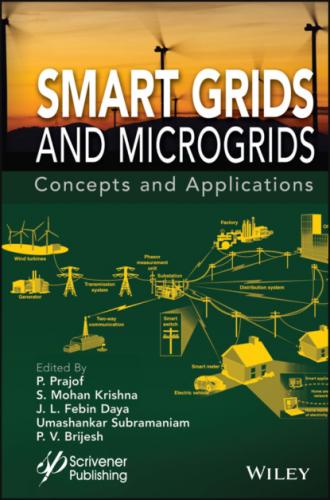Keywords: Solar PV parameter estimation, single diode model, maximum power point, Newton-Raphson, Gauss-Seidel
Nomenclature
| SPV | Solar Photo Voltaic |
| RE | Renewable Energy |
| MG | Microgrid |
| MPP | Maximum Power Point |
| STC | Standard Test Conditions: Solar Irradiance 1000W/m2 and Cell temperature 25±2°C |
| GS | Gauss-Seidel |
| NR | Newton Raphson |
| SDM | Single Diode Model |
| SCC | Short Circuit Condition |
| OCC | Open Circuit Condition |
| SUR | Successive Under Relaxation |
| Vmpp | Voltage at the maximum power point |
| Impp | Current at the maximum power point |
| Voc | Open circuit voltage |
| Isc | Short circuit current |
| ki | Temperature co-efficient for SC current |
| kv | Temperature co-efficient for OC voltage |
| G | Irradiance in W/m2 |
| T | Temperature in Kelvin |
1.1 Introduction
In recent years, the raise in energy crisis and environmental pollution makes the world move towards ‘Go Green’ technology called renewable power generation. The electric power generation from RE (Renewable Energy) sources has been tremendously increasing owing to their advantages of the eco-friendly and inexhaustible resource, which reduces global warming and environmental pollution caused by conventional generating sources and facilitates easy availability with minimum distribution loss, etc. [1, 2]. Among various RE (Renewable Energy) sources such as SPV, wind, biomass, and other sources, the power generation from a SPV source is more promising due to its large quantity in nature, its low cost, its lower weight, and its flexibility. Moreover, it is one of the major RE generations opted in a majority of the countries as either base load or peak load power generation by combining with other RE sources and storage technologies such as hybrid Microgrid (MG) source or integrating into the power grid [3, 4]. Due to the development of modern inverters equipped with maximum power point tracking (MPPT) and energy storage system helps the stand-alone SPV Microgrid system to supply reliable electrical energy in remote areas and also for rural electrification. One of the major challenges in solar PV is to track the maximum power (i.e. maximum voltage and current) from the solar PV production under dynamic environmental conditions such as varying temperature, irradiation, partial shading, and environmental pollution on the panel [5, 6]. Since the performance of solar PV generation system affects the power quality, reliability, security, and stability of MG under varying environmental conditions, it is necessary to improve the efficiency of the PV panel. To achieve this efficiency, an accurate mathematical model for estimating the maximum voltage and current under dynamic environmental conditions is required. The proper design and control of SPV module improves the efficiency and makes the SPV system as economically feasible. This leads to assess the payback period of SPV generation system for economic investment [7, 8].
In general, the performance of a PV panel highly depends on solar irradiance and conversion efficiency. The specification of PV panel data is obtained from the manufacturer datasheet. However, it is given only for standard test condition (STC) of solar irradiance (1000 W/m2) and operating temperature (25°C). Indeed, the data available are insufficient even at STC. Hence, it is essential to design a predictive performance tool that can estimate the unknown parameters of SPV with which economic feasibility of PV panel at any location characterized by particular operating environmental conditions can be investigated [9]. Practically, the SPV panel operates far from the STC. Therefore, the intrinsic parameters of the PV panel are obtained by solving the transcendental equation of the SPV module using analytical and numerical approaches for estimating its performance efficiency. As analytical approaches are problem-specific and complex to solve the non-linear equations, the deterministic based numerical approaches are used for solving the transcendental equation of the SPV module [10, 11]. In various studies, researchers neglect the series or shunt resistance to estimate the parameters of SPV module which result in mismatch error in V-I characteristics between the simulated and experimental results [12]. Further, to reduce the mismatch error the shunt and series resistance are considered in addition with ideality factor, light generated current and diode saturation current to estimate the five parameters of SPV. But in some cases, the value of shunt or series resistance is maintained constant to estimate the MPP which decreases the maximum power accuracy of SPV. The work in [5], presents the parameter estimation using NR and Levenberg-Marquardt method. In which, the author estimates the maximum power by modifying the characteristic equations for change in irradiance and temperature separately. The study fails to consider the variation in parameters under dynamic conditions and also the combined effect of change in temperature and irradiance is not considered simultaneously. The work reported in [13], uses the particle swarm optimization (PSO) to deduce the parameters and the results obtained are compared with NR. The result reveals that the NR method gives best results for monocrystalline type of SPV panel compared to PSO. However, this study neglects the shunt resistance for estimating the maximum power at MPP. Similarly, the study in [14] considers the series resistance and diode thermal voltage for estimation of maximum power. Nonetheless, in the literature the variation in shunt resistance, series resistance and thermal voltage are considered for estimation of maximum power using NR technique. However, the authors in [15] accounted the variation in parameters of Rse, Rsh, and Vt to
